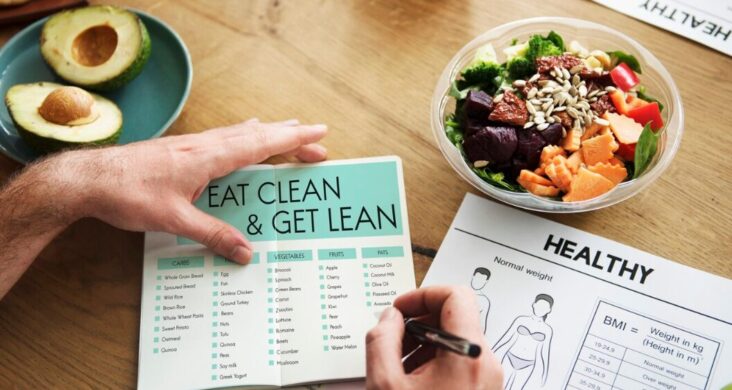If you’re looking for an effective way to shed those extra pounds, a well-designed weight loss diet chart for male could be the key to your success. Men face unique challenges when it comes to losing weight, from muscle mass to metabolic rates. A structured diet plan helps cut through the confusion, providing you with the right tools to start your journey.
This guide offers a comprehensive weight loss diet chart for male, outlining meal plans and strategies to make your fat loss journey smoother. Whether you’re aiming to lose a few pounds or transform your body, following a weight loss diet chart for male can significantly improve your chances of success. Let’s dive into the details of an effective diet that works with your body.
Understanding Male-Specific Nutritional Needs
1. Metabolism:
The metabolism of men generally burns calories at a faster rate than women due to higher muscle mass and lower body fat. This means men typically need more calories to maintain their weight but can also burn through them more efficiently when dieting. A weight loss diet chart for male takes this metabolic advantage into account, focusing on nutrient-dense foods to optimize fat loss.
2. Daily Calorie Intake:
A weight loss diet chart for male should be tailored to a man’s activity level. The average man needs between 2,000 to 2,500 calories per day to maintain his weight, depending on how active he is. To lose weight, a calorie deficit of about 300-500 calories per day is recommended, which equates to consuming 1,500 to 2,000 calories for most men.
3. Macronutrient Distribution:
The proper balance of macronutrients is essential when creating a weight loss diet chart for male. Ideally, the distribution should look like this:
- Protein (30%): Protein is essential for maintaining muscle mass and repairing tissues. Foods like chicken, fish, and plant-based proteins are ideal.
- Carbohydrates (40%): Opt for complex carbs such as whole grains and vegetables that provide lasting energy throughout the day.
- Fats (30%): Healthy fats like avocados, nuts, and olive oil support hormone production and overall health.
4. Hydration and Fiber:
Water plays a critical role in metabolism and digestion, making hydration an essential part of any weight loss diet chart for male. Aim to drink at least 8-10 glasses of water a day. Additionally, fiber-rich foods such as vegetables, fruits, and whole grains help with satiety and digestive health.
Key Principles of a Male Weight Loss Diet
To ensure the weight loss diet chart for male works effectively, here are some key principles to keep in mind:
1. Portion Control and Meal Timing:
Portion control is crucial to preventing overeating. Men often find themselves eating larger portions, which can hinder progress. A weight loss diet chart for male should encourage smaller, more frequent meals throughout the day. Eating every 3-4 hours keeps your metabolism active and helps regulate blood sugar levels.
2. Balanced Plates:
Each meal should consist of a combination of proteins, healthy fats, and complex carbohydrates. This ensures you stay full longer and reduce the urge to snack on unhealthy foods. For example:
- Protein: Chicken, fish, tofu, or beans
- Healthy Fats: Olive oil, avocado, nuts
- Carbohydrates: Quinoa, sweet potatoes, brown rice
3. Avoiding Crash Diets and Sugar Traps:
Crash diets often promise rapid results but can lead to muscle loss and nutrient deficiencies. Instead, aim for a steady, sustainable approach. Avoid foods high in refined sugars and processed ingredients. A weight loss diet chart for male emphasizes whole, nutrient-dense foods that provide long-term benefits.
4. Muscle Mass and Fat Loss:
Muscle mass is a powerful tool in fat loss, as it burns more calories at rest. Incorporating strength training into your fitness routine is an excellent way to boost metabolism and accelerate fat loss. Along with your weight loss diet chart for male, aim to include resistance exercises such as weight lifting or bodyweight workouts.
7-Day Weight Loss Diet Chart for Males
A practical weight loss diet chart for male is essential for steady progress. Below is a sample 7-day plan to guide your meals throughout the week:
- Day 1:
- Early Morning Detox: Lemon water + Green tea
- Breakfast: Oatmeal with berries + Almonds
- Mid-Morning Snack: Apple + Handful of nuts
- Lunch: Grilled chicken + Quinoa + Salad
- Evening Snack: Greek yogurt
- Dinner: Baked salmon + Veggies
- Before Bed (Optional): Herbal tea
- Early Morning Detox: Lemon water + Green tea
- Day 2:
- Early Morning Detox: Warm water with chia seeds
- Breakfast: Scrambled eggs + Whole grain toast
- Mid-Morning Snack: Carrot sticks + Hummus
- Lunch: Turkey breast + Brown rice + Steamed broccoli
- Evening Snack: Protein shake
- Dinner: Stir-fried tofu + Veggies
- Before Bed (Optional): Cottage cheese
- Early Morning Detox: Warm water with chia seeds
- Day 3:
- Early Morning Detox: Green tea + Lime water
- Breakfast: Smoothie (spinach, banana, protein)
- Mid-Morning Snack: Hard-boiled eggs
- Lunch: Grilled chicken salad + Olive oil
- Evening Snack: Almonds
- Dinner: Baked chicken + Sweet potato
- Before Bed (Optional): Protein shake
- Early Morning Detox: Green tea + Lime water
- Day 4:
- Early Morning Detox: Apple cider vinegar drink
- Breakfast: Greek yogurt + Mixed berries
- Mid-Morning Snack: Almonds + Grapes
- Lunch: Tuna salad with olive oil dressing
- Evening Snack: Boiled egg
- Dinner: Grilled lean steak + Asparagus
- Before Bed (Optional): Herbal tea
- Early Morning Detox: Apple cider vinegar drink
- Day 5:
- Early Morning Detox: Lemon water + Green tea
- Breakfast: Avocado toast + Poached eggs
- Mid-Morning Snack: Celery + Peanut butter
- Lunch: Chicken breast + Quinoa + Mixed greens
- Evening Snack: Protein bar
- Dinner: Fish fillet + Zucchini
- Before Bed (Optional): Cottage cheese
- Early Morning Detox: Lemon water + Green tea
- Day 6:
- Early Morning Detox: Warm water with lemon
- Breakfast: Omelette with veggies + Spinach
- Mid-Morning Snack: Mixed nuts
- Lunch: Grilled turkey + Brown rice + Kale
- Evening Snack: Greek yogurt
- Dinner: Grilled shrimp + Veggies
- Before Bed (Optional): Protein shake
- Early Morning Detox: Warm water with lemon
- Day 7:
- Early Morning Detox: Green tea + Lemon water
- Breakfast: Smoothie (protein powder, spinach, berries)
- Mid-Morning Snack: Carrot sticks + Almonds
- Lunch: Grilled chicken + Sweet potatoes
- Evening Snack: Boiled egg
- Dinner: Beef stir-fry + Veggies
- Before Bed (Optional): Herbal tea
- Early Morning Detox: Green tea + Lemon water
Foods to Include & Avoid
Foods to Include:
- Lean Proteins: Chicken, turkey, fish, tofu
- Complex Carbs: Brown rice, quinoa, oats, sweet potatoes
- Healthy Fats: Avocados, nuts, olive oil
- Vegetables & Fruits: Leafy greens, berries, apples
- Superfoods: Green tea, chia seeds, almonds
Foods to Avoid:
- Sugary Drinks: Sodas, sweetened beverages
- Processed Snacks: Chips, cookies, and fast food
- Fried Foods: French fries, fried chicken
- Refined Carbs: White bread, pastries
Lifestyle Tips for Sustainable Fat Loss
In addition to following a weight loss diet chart for male, make sure to incorporate these essential tips to support your journey:
- Sleep: Aim for at least 7-8 hours of quality sleep every night.
- Stress Management: Chronic stress can hinder fat loss. Practice mindfulness and relaxation techniques like yoga or meditation.
- Consistency: Stick with your meal plan and workout schedule. Consistency is key to success.
- Meal Prep: Plan and prep your meals in advance to stay on track.
Common Mistakes Men Make While Dieting
- Overeating Protein: While protein is crucial, eating too much can contribute to excess calorie intake.
- Skipping Meals: Skipping meals can result in overeating later on and may negatively impact metabolism.
- Falling for “Masculine” Junk Food: Advertisements for “masculine” junk foods may mislead you into consuming unhealthy options.
- Ignoring Portion Sizes: Even healthy foods can lead to weight gain if consumed in large quantities.
When to Consult a Professional
If you find that your weight loss diet chart for male isn’t yielding the desired results, it may be time to consult a professional. A personalized approach, developed by a nutritionist or fitness expert, can help you optimize your plan and overcome any challenges.
Fast-Track Your Fat Loss with Prettislim
If you’re looking for faster results, Prettislim’s non-surgical slimming solutions can complement your weight loss diet chart for male. Try our U-Lipo® treatments for targeted inch loss that’s safe and effective. Whether you’re looking to tone your tummy, sculpt your thighs, or define your jawline, Prettislim’s U-Lipo® treatments can help you achieve your goals. Explore our U-Lipo Tummy Tuck, our U-Lipo Thigh Tuck, our U-Lipo Face Chin Tuck, or our U-Lipo Hip Tuck. Book your free consultation and start your transformation today!
Final Thoughts
A well-structured weight loss diet chart for male can be a game-changer in your journey to achieve your fitness goals. By incorporating healthy foods, managing portion sizes, and committing to a consistent routine, you’ll be able to lose weight effectively and sustainably.
Fat Cavitation, U-Lipo & Body Contouring
What is Fat Cavitation | Does Fat Cavitation Treatment Work | Ultrasonic Cavitation Side Effects | Ultrasonic Cavitation vs Coolsculpting | What is U Lipo | U Lipo Treatment Cost in Mumbai | U Lipo Side Effects | Diet After U Lipo | What is Body Sculpting.
Frequently Asked Questions
Most men should aim for a calorie intake of 1,500-2,000 per day to lose weight, depending on their activity level.
Yes, but exercise will accelerate weight loss and help you retain muscle mass.
Healthy weight loss is about 0.5-1 kg per week, depending on your adherence to the diet and exercise.
Avoid sugary drinks, fried foods, and processed snacks to ensure a successful diet.
Setting realistic goals and tracking progress are key strategies to stay motivated.
Intermittent fasting can be effective when combined with a balanced diet plan like a weight loss diet chart for male.
Both are essential, but a weight loss diet chart for male focuses on balancing protein and healthy carbs to support fat loss.
Strength training, HIIT, and cardio exercises are excellent options for fat loss.






